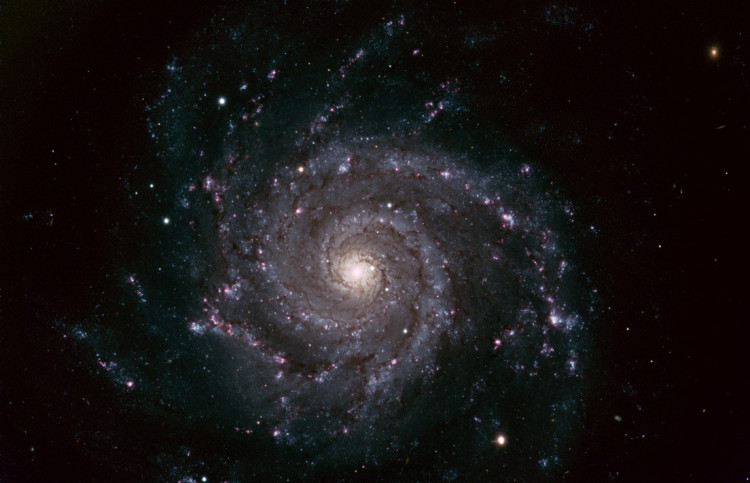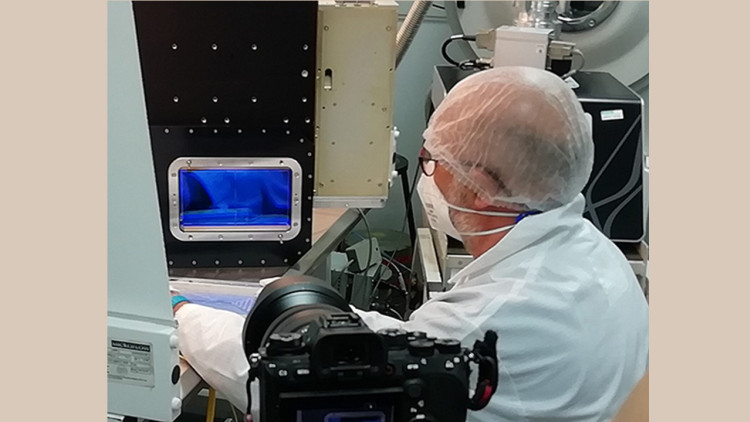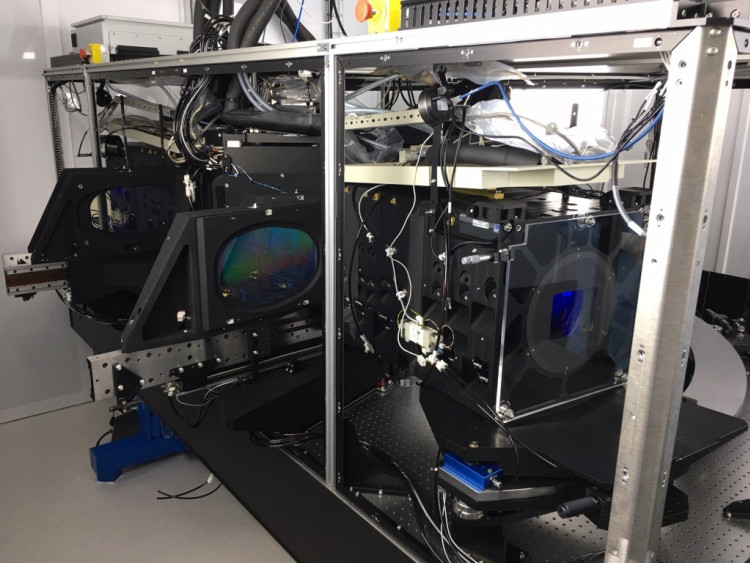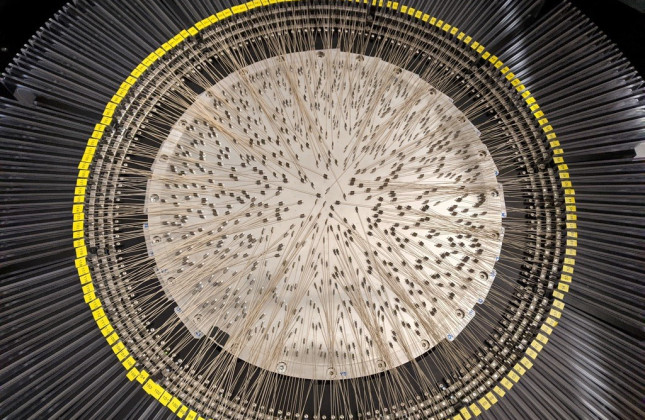WEAVE stands for WHT Enhanced Area Velocity Explorer and is a spectrometer partly made in the Netherlands. The instrument can focus on over 900 stars or galaxies at the same time. With high precision, it unravels starlight into thousands of separate colours. The core of WEAVE comprises almost 2,000 movable glass fibres. The individual glass fibres are arranged in a way that they do not disrupt one another. From a short distance, it appears like a piece of lace or a loom, hence the name WEAVE. With WEAVE, astronomers can study the formation of stars and research how galaxies and the universe change.
"We are incredibly pleased that WEAVE is now almost ready for real observations", states Scott Trager (Kapteyn Astronomical Institute, University of Groningen). Trager is the academic project leader of WEAVE and the chair of the WEAVE Survey Consortium that is set to deliver overview studies of the universe. "Due to travel restrictions arising from the coronavirus pandemic, it all took a little longer than planned, but now we can really get started."
Story continues below test image of spiral galaxy M74.
 Test image of spiral galaxy M74. The photo was made with the WEAVE instrument in 'full swing'. (c) Darío González Picos, Lara Monteagudo, Chris Benn and Ovidiu Vaduvescu/ING.
Test image of spiral galaxy M74. The photo was made with the WEAVE instrument in 'full swing'. (c) Darío González Picos, Lara Monteagudo, Chris Benn and Ovidiu Vaduvescu/ING.
Various components
Over the coming five years, WEAVE will generate millions of spectra of stars and galaxies. The data from WEAVE could, for example, be linked to the data collections of the LOFAR telescope and of the Gaia space satellite. Through this, astronomers will gain further insight into how our Milky Way was formed, how the stars in this galaxy have evolved and how other galaxies are comprised.
The spectrometer comprises various components. The so-called prime-focus corrector ensures that each glass fibre absorbs more than 80% of the starlight. The fibre positioner consists of two robots that arrange the over 900 glass fibres in the desired configurations within an hour. Two cameras, each with 12,000 x 6,000 pixels, gather the resulting spectra. Two cryostats containing fluid nitrogen cool the digital cameras down, so that no image distortion occurs.
Most of the components had arrived on Canary Island La Palma by the end of 2020. Due to travel restrictions arising from the coronavirus pandemic, this took longer than expected. Over the past few months, the astronomers have carried out standard tests and simple observations. In the coming two to three months, academic observations will take place as part of so-called science verification tests. Thereafter, astronomers from across the globe will be able to use the telescope.
Continue reading below the photo of the testing of one of the cameras.
 One of the digital cameras is being tested. The frame measures 20 by 12 centimetres and has over 75 million pixels. (c) ING.
One of the digital cameras is being tested. The frame measures 20 by 12 centimetres and has over 75 million pixels. (c) ING.
Consortium
The WEAVE spectrometer has been funded by Science and Technology Facilities Council (STFC, United Kingdom), Netherlands Research School for Astronomy (NOVA), Netherlands Organisation for Scientific Research (NWO), Isaac Newton Group of Telescopes (ING, United Kingdom, Netherlands, Spain), Astrophysical Institute of the Canaries (IAC, Spain), Ministry of Economy and Competitiveness (MINECO, Spain), National Institute for Astrophysics (INAF, Italy), French National Centre for Scientific Research (CNRS, France), Paris Observatory - University of Paris Science and Letters (France), Region île de France (France), National Institute for Astrophysics, Optics and Electronics (INAOE, Mexico), National Council for Science and Technology (CONACYT,Mexico), Lund Observatory (Sweden), Uppsala University (Sweden), Leibniz Institute AIP (Germany), Max-Planck Institute for Astronomy (MPIA, Germany), University of Pennsylvania (United States), Konkoly Observatory (Hungary).
 The WEAVE spectrometer installed at its location alongside the Dutch-British-Spanish William Herschel Telescope on La Palma. (c) Remko Stuik/NOVA/University Leiden
The WEAVE spectrometer installed at its location alongside the Dutch-British-Spanish William Herschel Telescope on La Palma. (c) Remko Stuik/NOVA/University Leiden
